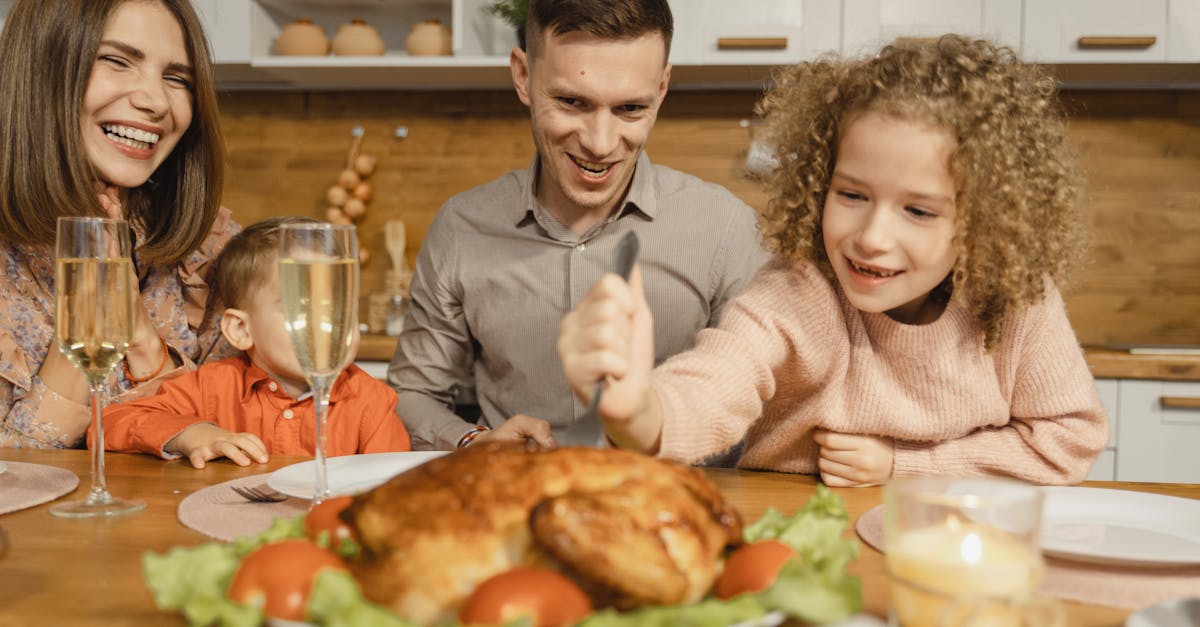The Journey Begins: Creating a Thankful Environment
To raise grateful preschoolers, start by fostering a thankful environment. Imagine your home becoming a gratitude garden!
Engage your child in daily conversations about blessings—they’re going to love this new bedtime routine!
Identifying Everyday Blessings
Identify everyday moments, like finding an extra cookie in the jar, as a blessing from God. This doesn’t mean praising your child every second (though they are adorable). Instead, introduce gratitude as a natural part of life.
Creating a Lasting Atmosphere of Gratitude
In doing so, you create an atmosphere where kids learn to appreciate, rather than expect. When children see parents express genuine thanks, it sets the stage for lifelong gratitude.
Key Takeaways:
- Focus on small daily moments rather than grand gestures.
- Model thankfulness to plant seeds for a grateful heart.
- Remind yourself that it’s the simple things that bring joy.
By embracing this approach, you are nurturing a sense of gratitude in your children that will last a lifetime.

Playful Methods to Teach Gratitude
Toddlers and preschoolers learn best through play, so why not sprinkle in some gratitude games? Here are some fun ideas to get you started:
- Thank You Treasure Hunt: Create a treasure hunt where you list hidden daily blessings for your child to find. This is even better than playing ‘chase the lost sock’!
- Arts and Crafts: Engage them with creative activities, like transforming handprints on paper into ‘thankful leaves’ on a gratitude tree. Using visuals like this enhances their learning process.
- Finger Painting Fun: While finger-painting is a favorite, remember that the paint can end up everywhere! Focus on the experience and the joy it brings.
As you play, emphasize the joy of sharing and receiving, cultivating thankfulness naturally. Fun and play are key to nurturing gratitude as your child associates these feelings with happiness and enjoyment.

Storytime: A Gateway to Grateful Hearts
Storytime is magical, but it can also be educational! Choose books rich in themes of gratitude. Stories like ‘The Giving Tree’ teach appreciation and the importance of gratitude.
If your narration includes character voices, you’re off to Oscar-worthy storytelling! After reading, converse with your child about the moral. Ask questions like:
- How did sharing make the characters feel?
This reinforces both comprehension and gratitude. Narratives offer more than entertainment; they are powerful tools that leave lasting impressions on young minds, making children relate to thankfulness at a personal level.

Every Meal a Reminder: Blessings on the Table
The dinner table can be a gratitude hub. Start meal times with a simple grace or a heartfelt ‘thank you’ circle where everyone mentions one thing they’re thankful for. Even admitting mistakes can fuel humor—‘Oops, I burned the toast again!’ These moments are perfect opportunities for laughter and learning combined.
Using meals as a way to reflect on the day’s blessings instills a routine of gratitude. Kids will love sharing their small joys and will look forward to it. It’s a deliciously clever way of creating gratitude awareness, coupled with fellowship around the meal.

- Start meal times with gratitude: A simple grace or a ‘thank you’ circle.
- Encourage sharing: Ask everyone to mention one thing they’re thankful for.
- Use humor: Share mistakes that led to laughter, such as burning toast.
- Create a routine: Make reflecting on daily blessings a regular practice.
Through these practices, each meal becomes an opportunity for connection, joy, and appreciation.
Turn Challenges Into Grateful Lessons
Life’s challenges are great teachers, even for little ones. When howls follow spilt milk, use it to teach appreciation for what’s left! Emphasize learning rather than disappointment. A broken toy can transform into a lesson in resilience.
Telling kids that it’s okay to feel upset helps validate their emotions. Humor can lighten the mood—‘Oopsie, Mr. Milk made a splash!’ Guide them toward gratitude by focusing on positives within problems. Teach them how missteps can lead to growth and understanding.
It supports emotional development and helps children learn to be thankful, even in adversity.

Daily Gratitude Rituals for Little Ones
To nurture gratitude, incorporate rituals into daily life. A ‘gratitude jar’ is an excellent start. Encourage your child to write or draw something they’re thankful for each day. By the end of the month, the jar will overflow with blessings!
Take a moment to review these together. Sharing joy over past grateful moments strengthens your bond.
Another ritual could be a bedtime gratitude check-in—a heartwarming tradition to reflect together before sleep.
Consistency is key, as regular practice solidifies gratitude as a lifelong habit for young children.

Here are some simple gratitude rituals to try:
- Gratitude Jar: Have your child write or draw something they’re thankful for daily.
- Bedtime Check-Ins: Reflect on the day’s blessings before sleep.
- Weekly Gratitude Review: Share what you’ve collected in the gratitude jar weekly.
Fostering Connection Through Shared Reflection
Concluding your day with reflection strengthens bonds within the family. It is essential to foster discussions about the things that made everyone feel blessed.
Create an atmosphere where everyone feels heard, including your preschooler—because their opinion counts too!
Share your own experiences, explaining how you too learn from daily events. Expressing gratitude openly can enhance emotional connections, enabling all to appreciate shared moments.
It’s a splendid chance to make your child feel valued and understood, paving the way for nurturing a thankful heart brimming with positivity and connectedness.

Key Points:
- Encourage open conversations about daily blessings.
- Make sure all family members, including children, are heard.
- Share personal reflections to lead by example.
- Express gratitude to foster emotional connections.
- Create a nurturing environment for positivity and appreciation.
